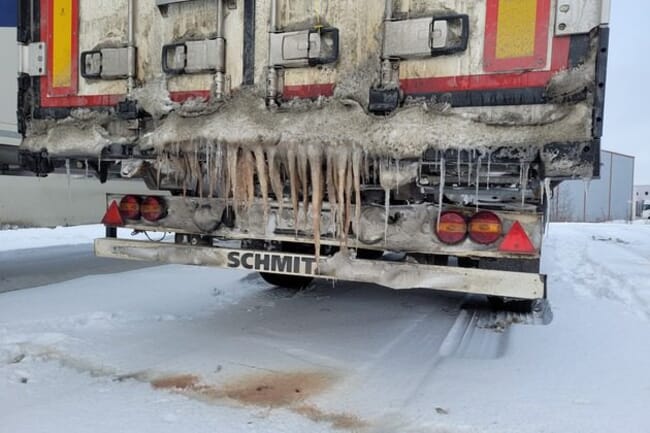
Nofima scientist Bjørn Tore Rotabakk states that temperature control is vital to eliminating the runoff problem. Nofima, SINTEF and NTNU are now launching a website with a model that can help players in the seafood industry maintain an effective temperature regime © Christian Petrich, SINTEF
The meltwater is currently allowed to drain off the trucks through drainage holes and onto Norwegian roads. Seafood companies and the Norwegian Truck Owners Association (NLF) estimate that a single truck can release up to 3,600 litres during a 36-hour transport.
Road authorities believe this can lead to slippery roads, both in the summer and winter, soiling ferries and creating foul odours as well as creating other traffic safety issues. According to the NRK, the Norwegian Public Roads Administration and the police have considered reporting fish farming companies for complicity in breaching the law.
Following an assignment from the Norwegian Seafood Research Fund, Nofima's Bjørn Tore Rotabakk has been collaborating with Christian Petrich from SINTEF Narvik and Jørgen Lerfall from the Norwegian University of Science and Technology to find the preferred temperature regime from packing to delivery of fresh fish to reduce the amount of meltwater runoff during transport.
Model for calculating runoff
The project demonstrated that there are significant differences in fish temperature control between the various industry players. According to Rotabakk, tThe main challenge with runoff probably lies with the fish producers, by not cooling the fish properly.
“The critical factor is that the fish are sufficiently chilled to a core temperature lower than 1°C before they are packed in crates filled with ice,” he explained in a press release.
Most of the fresh fish transported by truck in Norway are transported in polystyrene crates chilled with ice. Insufficient cooling of fresh fish before packing and icing causes a significant amount of ice to melt during transport.
“If the temperature in the fish is 3.0 °C, it produces almost 650 liters of runoff, and if the temperature in the freight room is also set to 3.0 °C, then you get a total of 740 litres during the first 48 hours of the fish being in transport,” said Rotabakk.
Significant differences in temperature control of fish
The vast majority of participants in the study reported a target temperature of 1–3°C for fish packed with ice. The researchers concluded that this will result in ice melting and runoff during storage and transport.
He believes that fast and effective cooling would be in the interests of the producers, distributors and consumers alike, as it reduces both the enzymatic and bacteriological activity, and thus provides better quality and extended shelf life of the fish.
“If you are unable to cool the fish well enough, for example during transport in the summertime, you can either compensate by postponing the shipment, or by using watertight crates,” said Rotabakk.
Several methods can solve the runoff problem
Several attempts have been made to stop the runoff problem, but no one has succeeded in eliminating it so far. The researchers summarise the status quo in their scientific report “Reduksjon av smeltevann fra fisketransport” (Reduction of runoff meltwater from fish transport):
- Watertight crates seem to be a feasible alternative that can be implemented quickly as long as the fish is sufficiently chilled. Watertight crates must either be designed to collect the runoff meltwater without the water coming in contact with the fish, or an absorbent layer must be used that is capable of absorbing the runoff. Both solutions will be more expensive compared to the current solution, where the meltwater is drained away through drainage holes in the crates.
- Another option is to fit collection tanks underneath the trucks to collect the runoff meltwater. There are certain capacity issues with this option, as the tanks currently available only hold approximately 250 litres. It will also take time before tanks can be installed on all semi-trailers transporting fish in Norway.
- Another option is alternative refrigerants that do not produce runoff meltwater, such as CO2 snow and gel-ice. CO2 snow is costly and can involve HSE concerns. Gel-ice is also more expensive than ice and creates waste management problems for the customer.



